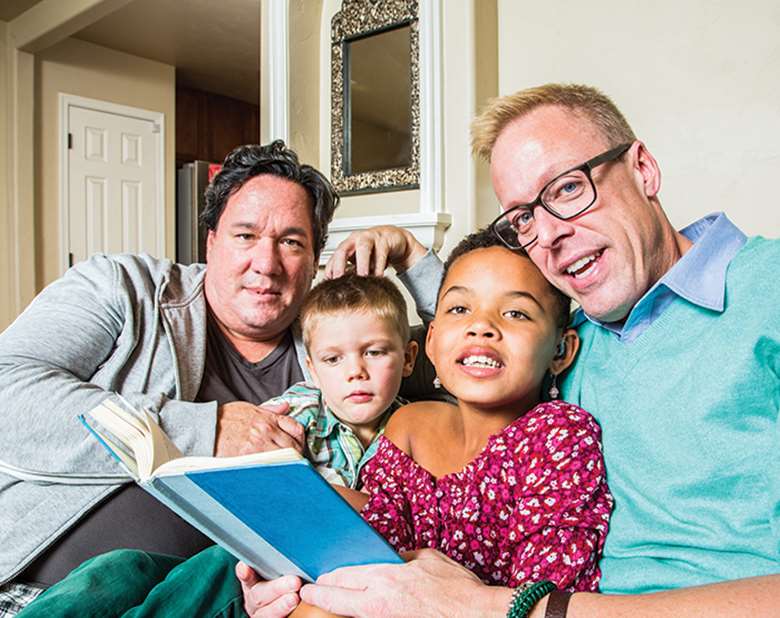(In)Sufficient?: ethnicity and foster care in English local authorities
Research in Practice
Tuesday, March 14, 2017
This paper examines the issue of ethnicity in the context of the sufficiency duty to secure adequate local placements for looked-after children.

- Derek Kirton
- Child and Family Social Work Vol 21, (2016)
The ethnicity of foster carers has received relatively little attention but is important as:
- Ethnic matching is perceived as advantageous for black and minority ethnic (BME) children
- Patterns of ethnic matching in fostering are often connected to those in adoption placements
- There is a legal requirement that in matching, local authorities consider a range of matters relevant to the child's long-term welfare including their needs, wishes and feelings, and his or her background, including religious persuasion, racial origin and cultural and linguistic background, if relevant.
Data from Ofsted's annual survey of fostering agencies are used here to map the ethnic profiles of foster carers with those of both looked-after children and local adult (aged 25-64) populations. More than 70 inspection reports for fostering services in England are analysed to gauge how authority performance is assessed in this regard.
Foster carer and care population
There are relative shortfalls of foster carers for most groups (particularly those of mixed backgrounds) with the exceptions of white British, Indian, Pakistani and black Caribbean backgrounds.
The number of white British children in care is 49,910 compared to 55,068 white British local authority foster carers. The corresponding BME figures are 16,710 and 10,966. There are particularly low Indian and black Caribbean looked-after children populations compared to their respective foster carer populations. By contrast, Bangladeshi, black African, Chinese and mixed race children in care populations were between 1.4 and seven times higher than that of available foster carers of the same ethnicities. Variations were dramatic at the authority level.
Foster carer and local adult population
A significant minority of authorities perform poorly regarding the ethnic diversity of their foster carers. In some London boroughs, BME foster carers were overrepresented by up to five or six times. Conversely, eight authorities had more than five times as many white as BME carers relative to adult populations.
Evidence was found that larger and smaller BME populations are reflected disproportionately in foster care numbers. Therefore, the percentage of the BME adult population of an authority was found to be correlated significantly with sufficiency. The authors suggest that different recruitment strategies and agency priorities will also impact on the ethnic diversity of foster carers.
Inspection of issues relating to ethnicity
Analysis of Ofsted reports revealed wide variation in the depth of coverage of issues relating to ethnicity with many reports offering limited or no challenge to poor performance. Studies have noted the limited training offered to inspectors and hence reliance on their own degree of knowledge and interest, an important contributory factor to inconsistency.
Ofsted (2012) guidance refers to how "there will be references to equality and diversity throughout the report", while its Equality Impact Assessment for fostering services (2011) highlights children's various "diversity" needs (including ethnicity) to be addressed and considered in placement decisions. This document also refers to gauging the support offered to foster carers and specifically BME foster carers. Yet, from a reading of the reports, these expectations were not met on a consistent basis, and much of the commentary was positive in tone, but often light in evidence.
Among authorities that appeared to perform poorly on BME sufficiency, variability of Ofsted reports prevailed. While some were challenging, many offered little or no critical commentary, with authorities often deemed "good" or "outstanding" on issues of equality and diversity.
Implications for practice
Issues of diversity must be addressed if organisations are to meet the needs of BME children adequately. In relation to sufficiency, this might include emphasis both on recruitment of BME foster carers and on ensuring appropriate supports are in place for those fostering BME children. The analysis of Ofsted data and reports suggests that these features are weak in many local authorities and importantly that there is often limited challenge to this from inspection processes.
From this study, while the challenges relating to ethnicity and sufficiency appear more acute in predominantly "white" areas, there is enormous variety and hence scope for lessons to be learned from those authorities that perform well in their recruitment and support. In turn, this requires greater consistency and commitment within the governance arrangements for foster care, including leadership from government.
The research section for this special report is based on a selection of academic studies which have been explored and summarised by Research in Practice, part of the Dartington Hall Trust.
This article is part of CYP Now's special report on foster care. Click here for more




